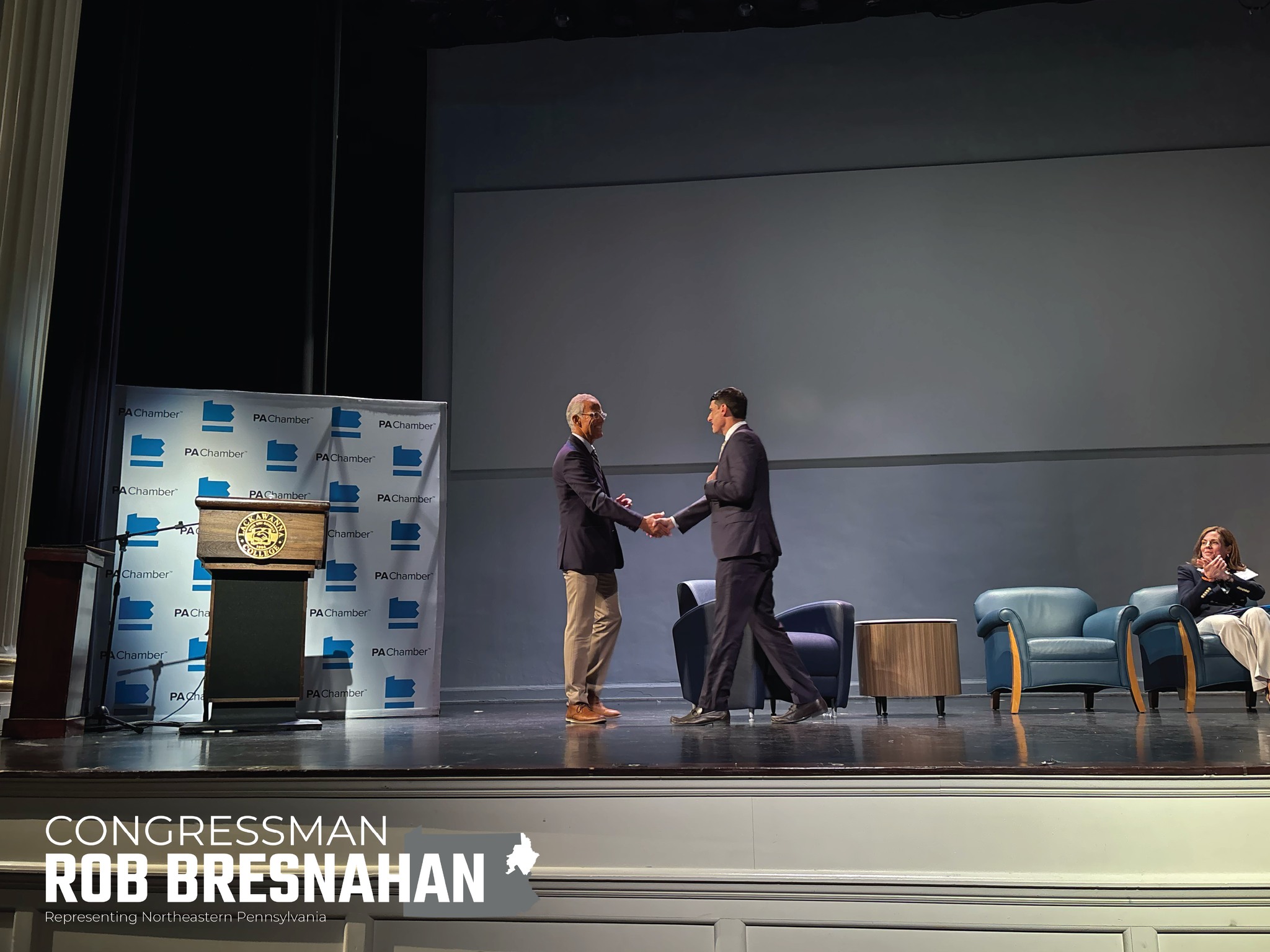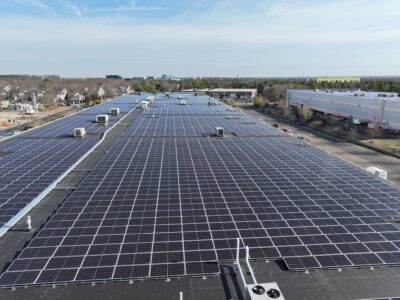On May 2, Lackawanna College in Scranton hosted an event to discuss “Pennsylvania’s Energy and Economic Opportunity,” collaborating with the Pennsylvania State Chamber of Business and Industry and regional economic development agency Penn’s Northeast. The event included federal, state, and local panel discussions about how the state can capitalize on burgeoning opportunities under the new administration to maximize its energy potential and spur economic development.
U.S. Representative Rob Bresnahan (R-PA-08) participated in the federal panel alongside Anthony Pugliese, chief commercialization officer of the U.S. Department of Energy (DOE) and director of the Office of Technology Commercialization, and Kristin Whitman, senior vice president of government relations for the American Petroleum Institute.
During the discussion, Rep. Bresnahan addressed roadblocks to energy development in Pennsylvania. He said the federal government should get out of the way of the states’ ability to make progress: “[We need] to empower our state representatives, our state legislators, and our commonwealth to be able to make decisions without having to go through the bureaucratic process.”

Photo Courtesy American Petroleum Institute Pennsylvania
For example, Rep. Bresnahan discussed his meeting with the Pennsylvania Department of Transportation (PennDOT) the week before, at which the main topic of conversation was improvements to Nanticoke’s bridges. In March, Luzerne County Manager Romilda Crocamo closed the Nanticoke Bridge, which was built in 1914, after inspectors found signs of deterioration and the loss of key components. “During the meeting, all parties expressed a unified commitment to achieving this goal as expeditiously as possible. The federal, state, and county elected officials acknowledged the importance of enhancing connectivity and accessibility for the communities served by this crossing,” Crocamo remembered.
However, with $10 million in federal funding, department representatives told Rep. Bresnahan that the project would take six years to complete. He said, “That’s the problem and that’s the reality. When you get FHWA (Federal Highway Administration) or federal dollars involved, it opens up a whole new can of worms.” During the state panel, Sam Robinson, deputy chief of staff in the Office of Governor Josh Shapiro, said that the governor is working to speed up permitting timelines in the state.
Other potential roadblocks to progress include the U.S. House’s passage of a budget and tax bill that would largely axe clean energy tax credits that spur local investment in the state. As the Senate takes up the bill, the fate of these energy investments hangs in the balance.

Photo Courtesy City of Nanticoke
Pennsylvania’s energy demand is rising, and its supply is racing to keep pace. According to Robinson, Pennsylvania is the third-largest energy-producing state. Yet, it may still need to increase its energy capacity by two-thirds over the next five years to meet growing demand. He explained, “An absolutely extraordinary amount of power is going to be needed if we seize the full potential of this moment … but Pennsylvania is really well prepared for it. We know how to build things. We have ample resources. And we have really … a history and a culture of building these energy projects and delivering energy to the grid.”
New data centers in the state are drumming up much of this demand. During the local panel, John Augustine, president and CEO of Penn’s Northeast, stated that developers have expressed the desire to construct eight or more data centers in the northeast region of the state. Northpoint Development, for example, was already approved for a data center campus in Hazleton. Shelby Linton-Keddie, senior director of government, regulatory policy, and external affairs for PPL Electric Utilities, added that it has expanded from six gigawatts (GW) contracts with data center companies to 11 GW in the past eighteen months. This represents a massive escalation in pace, she said: “That seven-and-a-half gigawatts took us 100 years to build. We are projected to more than double that in the next five or six years.”
Augustine described the benefits of bringing such data centers to the state to the Times Leader: “They will bring good-paying jobs, lots of opportunities and add to the tax base. It’s a win, win, win situation.” The Hazleton project, in particular, will create around 900 new jobs. Dana Burns, director of communications for PPL Electric Utilities, highlighted the community benefits: “Infrastructure upgrades related to these projects will bring strong reliability benefits to the region along with future reduced transmission service costs for all customers.”
Pennsylvania leaders expect this trend to continue. Rep. Bresnahan said, “The second fastest growing industry in Northeastern Pennsylvania is energized land, which will help power these data centers. I look forward to these investments and encourage companies to look to Northeastern Pennsylvania as a home for economic and technological advancements.” Linton-Keddie expressed, “The electric infrastructure that comes with it is going to be something that this area hasn’t seen for a very long time … that 11 gigawatts that we have under agreement … [is] only the beginning.”

Photo Courtesy PPL Corporation
Pennsylvania is poised for an energy renaissance to streamline permitting and advance projects, but only if the clean energy tax credits are maintained. As Rep. Bresnahan wrote in a social media post, the topic of Pennsylvania’s energy future “unites both political sides and brings together labor unions and private industry to build a skilled workforce.” Bill Sordoni, CEO of Pennsylvania Midstream, added that the demand for energy development in Northeast Pennsylvania presents a “once-in-a-generation opportunity.”





